This time I decided to check the capabilities of the mobile operator in motion: I moved to different regions and tested the access speed of one particular telecom operator. Traditionally, a video was made for video enthusiasts, and for the rest there will be text with pictures.
This time I decided to use the SIM card of the Wifire operator, which provides mobile Internet. Moreover, unlike one well-known operator, Wifire tariffs are valid not only in 4G (LTE) networks, but also 3G, which is important for those whose signal level is not very high, since the 3G signal coverage is often more and the connection is better. And of course, it was interesting for me to test the speed of access to the network and the lack of roaming, so I took a little rest and drove through several areas of our country.

To fully enjoy the ease of use and speed of access to the network, I used the smartphone Huawei P30 Pro. This is the top-end smartphone in Huawei's line of smartphones digging, and it has truly outstanding features. It was especially important to me that this smartphone supports aggregation of LTE channels and is theoretically capable of providing an incoming data transfer rate of up to 400 Mbps, if such an operator can provide. Aggregation of channels is the union of several channels at once at the base station for data transmission to the subscriber. Typically, on smartphones, the operation of this mode is displayed as 4G +.
Testing methodology
In each new place, testing was carried out at approximately the same time - in the afternoon. That there were no peak morning and evening loads on base stations and it was possible to receive real data on data transmission speed. I was more interested in the incoming speed, because the outgoing speed is important only when sending large amounts of data, and during video conferencing or streaming, the outgoing data stream is no more than 3-5 Mbit / s. Testing was conducted using the popular service Speedtest.net. Measurements were made several times and the median value was taken. If there were any peak overestimated or underestimated values, then they were not taken into account. The smartphone worked in automatic mode, but with almost all measurements there was LTE connection and only in one place there was only 3G connection, but it was far from cities.
Why is this needed?
It would be ridiculous to do a comparative test of providers, because the nuances of wireless communication are such that the test results would be suitable only for me alone. Sometimes it’s enough to move a hundred meters in any direction and the measurement results of different operators will change dramatically - both the landscape, the load of base stations, and the capabilities of client equipment affect here. I was wondering how convenient and comfortable it is to use mobile Internet from a specific provider to a user who, as part of work and leisure, moves a lot and uses mobile Internet. Let's hit the road!

The first point on the trip was beautiful Nizhny Novgorod, which met with low temperature and clear sky. The city is rightfully included in one of the popular tourist routes. The wind almost knocked down, but I still rode the cable car - it was interesting. Then I came to a place popular with tourists and locals - the Chkalov ladder. It was almost noon, there weren’t so many people, but there were enough people walking, that is, the load on the base stations was standard. Measurements of speed also fluctuated upwards, but I counted this result as the main result - 51.9 / 26.0 Mbit / s (DL / UL). A decent indicator in a popular and visited place.
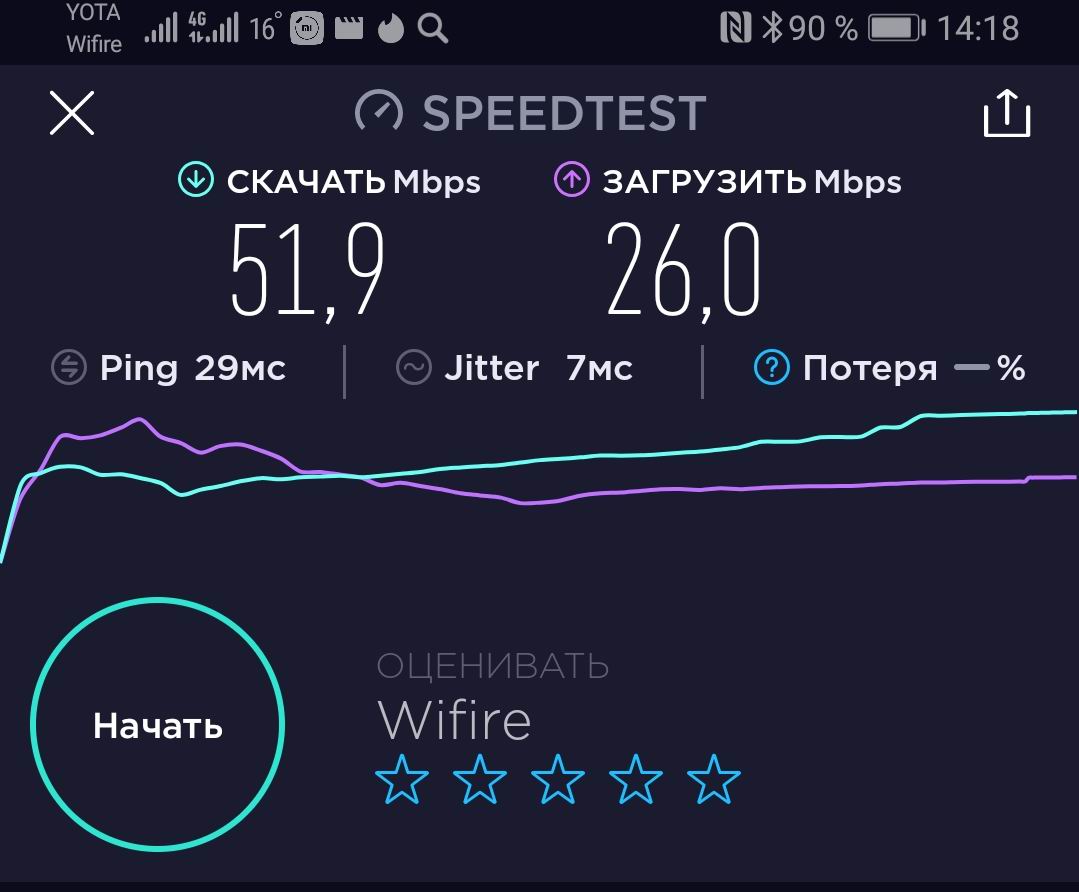
The next point was a very interesting lake Svetloyar. It is located in the Nizhny Novgorod region and according to legend, the city of Kitezh is hiding here. If you look at the map, this lake has an almost perfectly round shape, hence several versions of the origin of the lake: glacial-karst formation, tectonic fault and due to a meteorite fall.
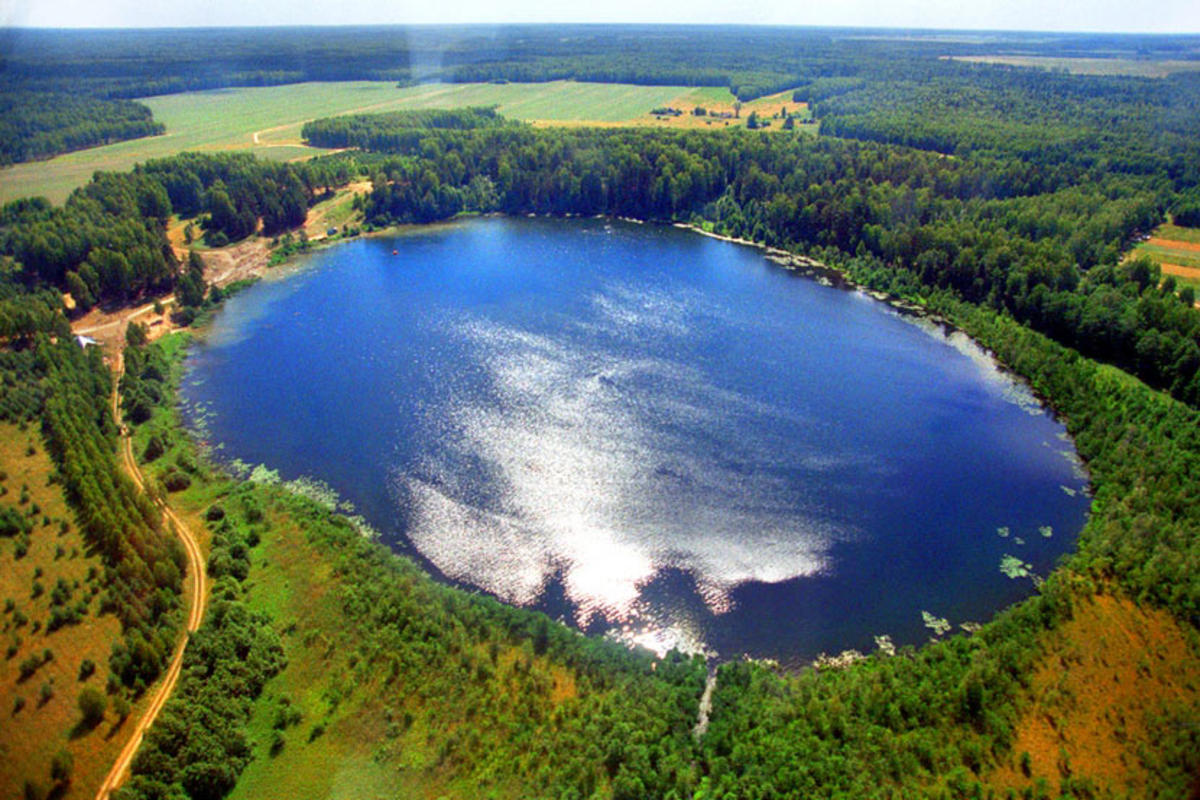
A very popular place for both pilgrims and tourists. Despite the fact that the place is quite visited, with tourist infrastructure there is not very good. Actually, these words can be said about many popular routes in Russia. However, access to the network, even just for historical reference about the place of stay, should be. The lake is surrounded by a high forest, and only 3G signal was caught on the shore. At such moments, the influence of the terrain is particularly well felt. However, the speed in this place was 12.8 / 2.19 Mbit / s. This is quite enough even for video calling on any messenger and for quiet surfing. YouTube videos are also freezing.
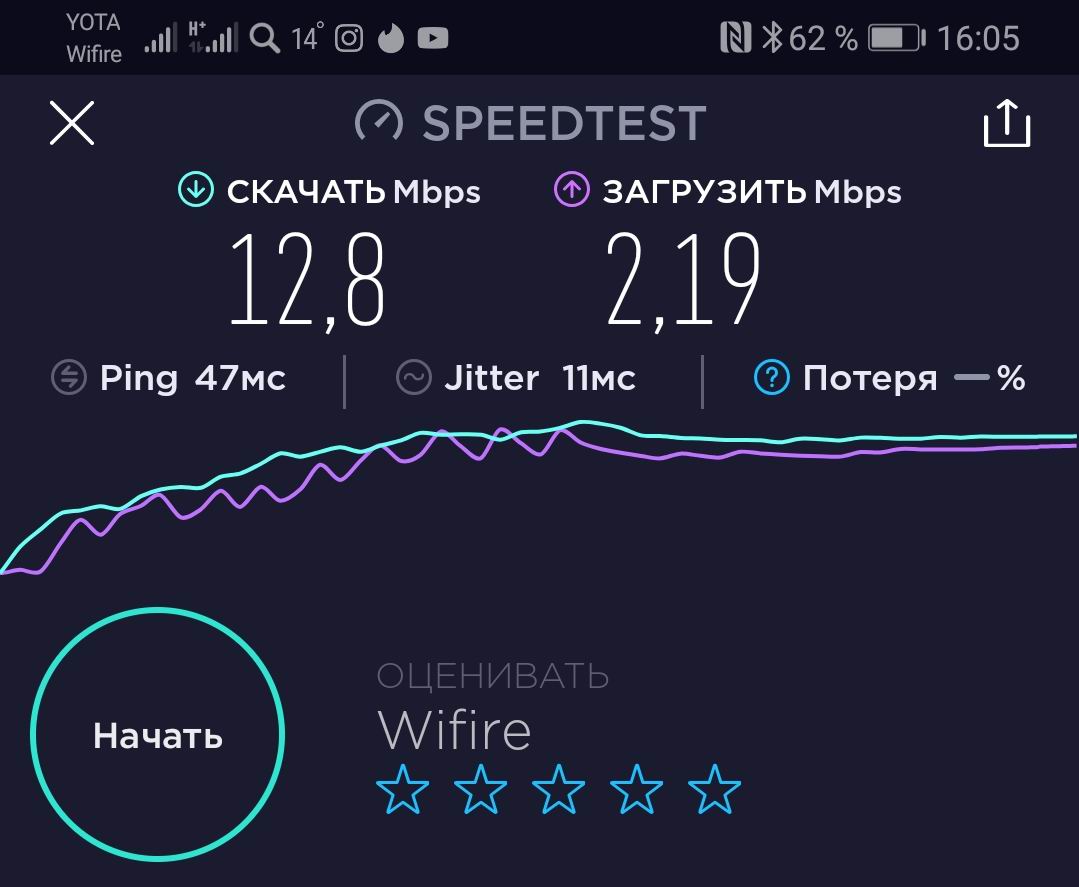
Further, my path lay upstream of the Volga to the city of Tver. Many associate this city with the deceased chanson singer, but for me this city, first of all, is the birthplace of Athanasius Nikitin, who reached India. His diaries “Walking Over Three Seas” became the basis for the commodity-economic and political interaction between Russia and India.

Despite the favorable location between the two capitals and closer territorial relation to the capital, Tver did not impress me rather depressing, especially after Nizhny Novgorod. Although the tendency to restore the travel palace of Empress Catherine is very happy. Of course, during the trip I want to share photos, talk, sometimes I have to work, so good communication is extremely important. I decided to take speed measurements on the embankment of the Volga River. It was a weekday, working hours, so the load on the base station was typical. Peaks of load are observed in the morning and in the evening, when everyone goes online from mobile devices to read the news, browse through social networks or share the events of the day. The connection was carried out via 4G, and since the place was popular, somewhere nearby there was a base station, because the signal level was excellent. Measurement results: 60.6 / 40.8 Mbps. A very worthy result, both for work and for entertainment. In principle, at such a speed, you can watch video in 4K online, as well as broadcast with high bitrate in FullHD.

Then I headed to the capital, collecting some traffic jams along the way. I decided to measure the communication speed directly in motion. And on one of the stages, at a speed of just over 100 km / h, I also launched the Speedtest utility. The result is very interesting: 12.3 / 4.9 Mbps. With such speed in a car, you can safely watch online movies or communicate via video. In principle, the speed fluctuates during movement, since the smartphone quite often clings to a new tower, and there the situation with the signal level and channel load can be completely different. On the way, I saw a result above 100 Mbit / s for downloading, but it was at rest at some of the intersections with a traffic light.

My journey and test of mobile Internet is coming to an end, and Zaryadye Park will be the final point. Beautiful views, good infrastructure and a large number of tourists at any time. The latter should significantly complicate the test, because hundreds and even thousands of photographs are constantly sent from this place to all countries of the world. People communicate with interlocutors not only from other cities, but also countries. I wonder what will be the results of measurements here? And the results are somewhat surprising, although predictable: 58.4 / 3.1 Mbit / s. As expected, users mostly send photos from here, thereby downloading the outgoing data channel. But even this speed is enough for a video call. Well, the download speed is more than enough to even watch an online movie theater.
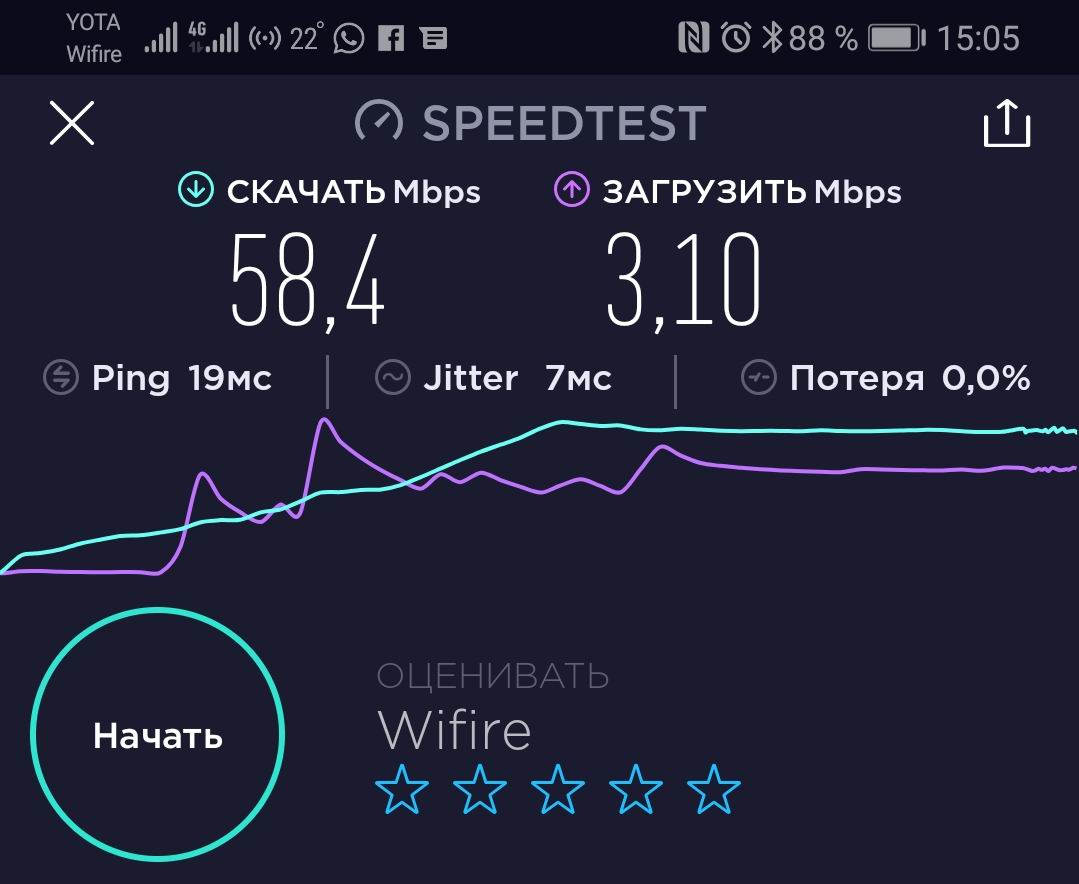
Conclusion
I will collect in a table all the data on the reception and transmission of data in different regions. It should be noted that nowhere the speed of the incoming channel has not fallen below 10 Mbps, which means that it will be quite comfortable to receive data or work with documents on the way. I have never had to contact technical support to solve communication problems. Internet access appeared a few minutes after the activation of the SIM card, and the change in the region did not affect the possibility of access to the network. Wifire provider, without providing voice and SMS, provides access via a cellular network via 2G / 3G / 4G channels, that is, access to the network will always be, with any type of connection, if there is a signal at all.
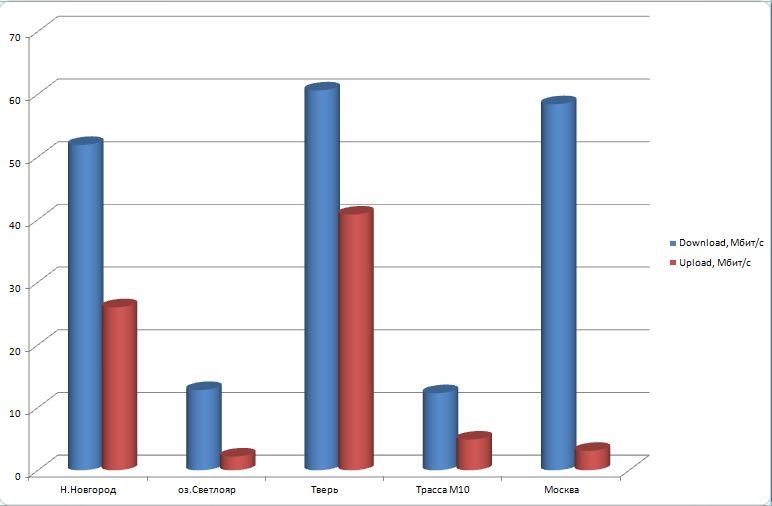
As for tariffs, that is, packages for a month, when every new month the traffic package is updated. It is possible to buy traffic and spend it without a time limit. This is well suited for all kinds of smart devices that need access to the network infrequently and a bit. For example, in a tablet, modem, or for any kind of smart devices, if you rarely use gadgets outside of an available Wi-Fi network, and Internet access is urgently needed.
I am ready to answer your questions in the comments and ask to share observations on what speed your mobile operator provides right now. It is advisable to write in the following format: city, DL / UL speed, time.